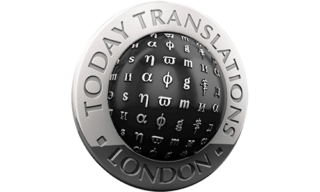Prime ministerial elections in India, the world’s largest democracy, pose a number of complex challenges and obstacles to candidates and their parties. One of the trickiest is how to communicate to – and win over – an electorate that speaks almost 450 languages.
When parliamentary election fever sweeps India, the sheer enormity of the electorate and complex voting system has the rest of the democratic world watching in awe.
Less cited, however, are the linguistic challenges faced by the nominees. Aside from being the world’s largest democracy with an estimated 815 million eligible voters (more than the entire United States and European Union put together), India is also the world’s most linguistically rich country, with 22 official languages legislated across its 28 states.
Communicating a consistent and powerful message to such a diverse electorate is almost as important as the policies themselves. Candidates are rarely seen giving a speech without at least one interpreter by their side.
According to the Guardian, Narendra Modi of the Bharatiya Janata Party, the current front-runner, has understood this and capitalised on it. A quick glimpse at his online profile shows a website that is available and updated in 16 languages, while his PR team are tweeting on his behalf in nine different languages – Hindi, Urdu, Kannada, Marathi, Malayalam, Oria, Tamil, Bangla and English.
However, even the seasoned professionals can misunderstand India’s intricate and disparate linguistic landscape. The Guardian points out that the Modi campaign team ran adverts in Hindi throughout southern parts of India, where voters are much less likely to speak Hindi than they are Telugu, Tamil and Malayalam.
Given the cultural sensitives found in many states, as well as the pride Indian’s boast for their mother tongue, such a slip up has the potential of killing off potential votes.
India is unique in its linguistic heritage. Hindi aside, no language is spoken by more than 10 per cent of the population, and yet, incredibly, it is normal for much of the population to speak up to three different languages in their day-to-day routines.
While English, along with Hindi, is still often used for official purposes by the Indian Government legislative pushes in the immediate decades following India’s independence from Britain in 1947 sought to end the use of English in the country altogether and categorise Hindi as the country’s only official language. This was met by protests from states where Hindi is less widely-spoken, some of which turned violent.
Language is a pivotal factor when it comes to identifying one’s culture and heritage virtually anywhere in the world. Understanding such cultural sensitivities and getting the right message across is vital, whether you are visiting for leisure or planning a business trip, let alone running for Prime Minister with a population that exceeds one billion people.
Today Translations is the UK’s leading provider of translation, interpreting and cultural consultancy services, through a global network of over 2,500 linguists and experts. We specialise in helping companies and individuals effectively capitalise on language, mitigate risk and proposer in new markets.
To find out more about our services, contact us at [email protected] or on +44 (0) 207 397 2770.
We’re social! Find us on Twitter, Facebook, Google+ and LinkedIn.

